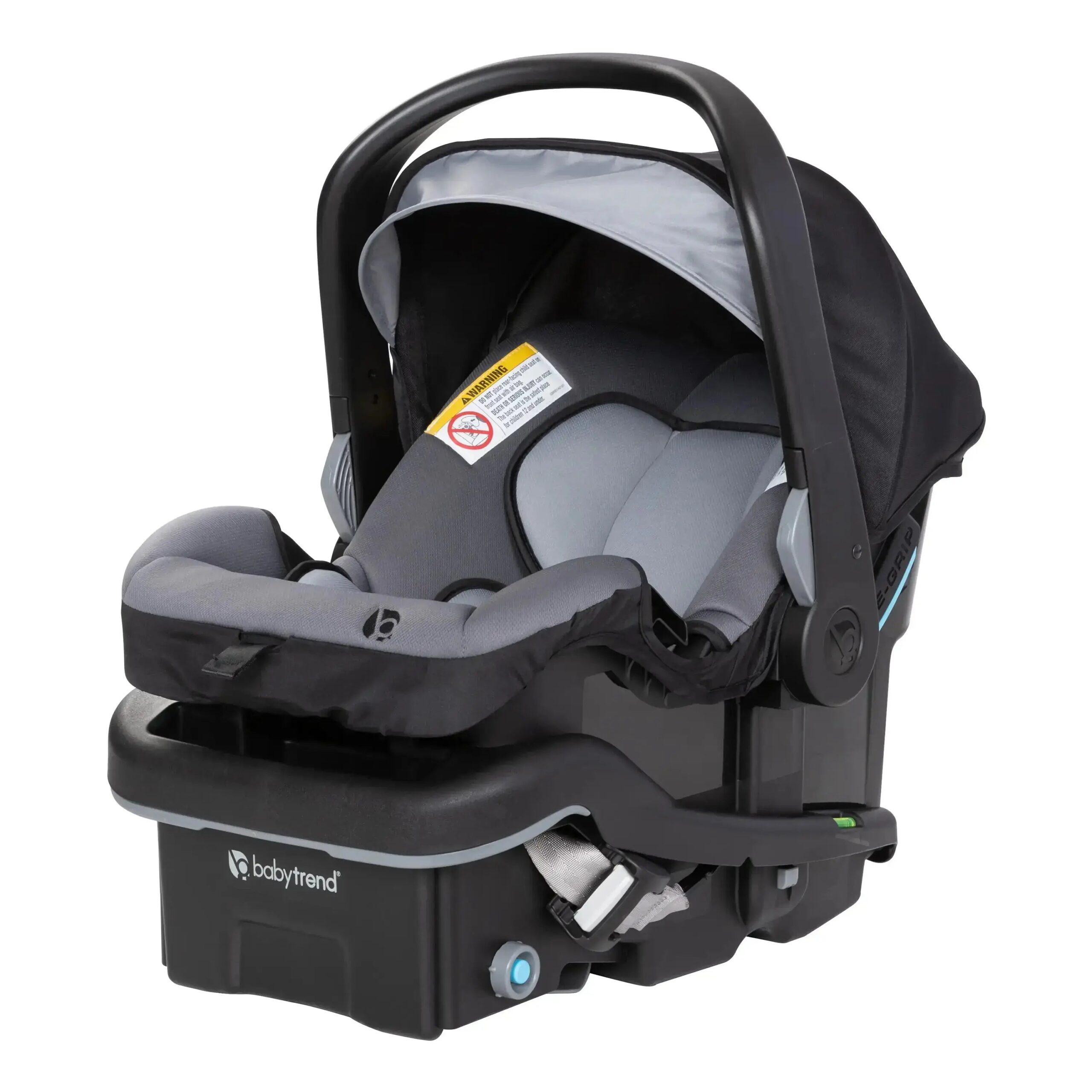Keeping your little one safe is your top priority, especially when you’re on the road. But figuring out Ohio infant car seat laws can feel overwhelming.
Are you using the right type of seat? Is it installed correctly? Are you meeting all legal requirements? These are questions every parent or caregiver should know the answers to. This guide will break down Ohio’s infant car seat laws in simple, straightforward terms so you can drive with confidence knowing your baby is protected.
Stick around, and you’ll not only understand the rules but also learn some practical tips to make car travel safer and stress-free for you and your child. Ready to ensure your baby’s safety while staying on the right side of the law? Let’s get started!
Ohio Car Seat Requirements
Ohio law requires proper car seats based on a child’s age and weight. Infants under 1 year and weighing less than 20 pounds must use a rear-facing car seat. Children aged 1 to 4 years or weighing 20 to 40 pounds can transition to a forward-facing seat. Always check the car seat label for specific weight limits.
Rear-facing seats protect a baby’s head, neck, and spine during crashes. Experts recommend using a rear-facing seat until a child outgrows it. Forward-facing seats are for toddlers who exceed rear-facing seat limits. Ensure the harness fits snugly over the child’s shoulders and chest.
Booster seats are for children aged 4 to 8 years. They must weigh at least 40 pounds and be shorter than 4 feet 9 inches. Booster seats help position the seat belt across the child’s chest and lap. Avoid placing the seat belt near the neck or stomach.

Credit: www.copcp.com
Proper Installation Tips
Double-check that the car seat is tightly attached to the vehicle. The seat should not move more than an inch in any direction. Follow the instructions given in the car seat manual. Adjust the harness straps to fit snugly around the child. Make sure the chest clip is at armpit level for safety. Always check the recline angle to keep the baby’s head upright.
Both LATCH and seat belts are safe options for securing car seats. LATCH (Lower Anchors and Tethers for Children) uses built-in hooks in the car seat. Seat belts are equally effective when installed correctly. Never use both methods together, as this can affect the seat’s performance during a crash. Choose the option that works best for your vehicle and seat model.
- Car seat is too loose.
- Harness straps are too loose or twisted.
- Chest clip placed too low or too high.
- Incorrect recline angle for the seat.
- Using both LATCH and seat belts at the same time.
Exceptions And Special Cases
Certain exceptions apply to Ohio infant car seat laws, such as medical conditions or emergency situations. These cases may require alternative safety measures while traveling. Parents must consult with healthcare professionals or legal authorities to ensure compliance and protect their child’s safety.
Medical Exemptions
Some babies may have medical conditions that make car seats unsafe. A doctor can provide a written exemption for these cases. Parents must carry this documentation while driving. This helps avoid fines during inspections. Always consult your doctor for safe travel options.
Traveling With Multiple Children
Families with multiple kids may face space issues in cars. Ohio law requires every child to use a proper car seat or booster. Parents might need to arrange larger vehicles for safe travel. Safety comes first, even in crowded cars.
Rideshare And Taxi Considerations
Ohio law applies to rideshare trips and taxis too. Parents must bring their own approved car seat for infants. Drivers are not required to provide these. Always plan ahead for your child’s safety.

Credit: ohiotiger.com
Penalties For Non-Compliance
Breaking car seat laws in Ohio can lead to serious penalties. Fines often start at $25 but can go higher. Repeat offenses may bring larger fines or even court hearings. Parents may face legal trouble for repeated violations. This could mean more time spent handling court matters.
Some violations might also add points to your driving record. Accumulating points can lead to a suspended license. It is important to follow the law to avoid these issues. Keeping your child safe is the law and your responsibility.
Non-compliance can affect your car insurance rates. Violations may signal risky behavior to insurers. This could mean a higher premium during policy renewal. Some companies may even cancel coverage for repeated offenses.
It is best to avoid these problems by following the law. Proper car seat use protects your child and your finances. Being careful helps you stay insured and saves money long-term.
Tips For Choosing The Right Car Seat
Ohio’s infant car seat laws ensure your baby’s safety while traveling. Choose a seat that meets state requirements and fits securely. Prioritize features like proper harness systems and size compatibility to comply with regulations and protect your child.
Evaluating Safety Ratings
Always check a car seat’s safety ratings before purchasing. Look for seats with high crash-test scores. Ensure the seat meets federal safety standards. A reliable seat can protect your child in emergencies. Some seats include extra features for better head and neck support. Compare different brands to find the safest option.
Matching The Seat To Your Vehicle
Car seats vary in size and design. Not every seat fits every vehicle. Check your car’s manual for compatibility details. Measure your backseat space before buying a seat. Some seats work better with specific latch systems. Try installing the seat before finalizing your purchase.
Budget-friendly Options
Quality car seats don’t have to be expensive. Many affordable options meet safety standards. Compare prices online or at local stores. Consider seats that grow with your child to save money. Look for discounts during sales seasons. Check second-hand seats carefully for damages or missing parts.

Credit: richlandhealth.org
Transitioning Between Car Seats
Ohio infant car seat laws outline clear guidelines for transitioning between car seats as children grow. Parents must ensure proper seat types and installation to meet legal requirements and protect their child’s safety. These laws emphasize age, weight, and height to determine the appropriate car seat stage.
Signs It’s Time To Upgrade
Children outgrow their car seats as they grow taller and heavier. Check the height and weight limits listed on the car seat label. If your child exceeds these limits, it’s time to upgrade. Watch for their head reaching the top of the seat. This means the seat no longer provides proper protection. Also, pay attention to their shoulders surpassing the harness slots. This may indicate the seat is too small.
Some signs are less obvious. If your child looks uncomfortable or cramped, the seat may be too tight. Always ensure the seat fits their body properly for safety.
Ensuring A Smooth Transition
Prepare your child for the new seat by explaining the change. Let them sit in the seat before using it in the car. This helps them feel comfortable and secure. Adjust the harness straps to fit snugly around their body. Check that the seat is installed correctly using the vehicle manual.
Keep your child in a rear-facing seat as long as possible. These provide better protection in crashes. Once your child is ready, move them to a forward-facing seat with a harness. Follow state guidelines for age, height, and weight requirements.
Resources For Parents In Ohio
Parents can visit nearby car seat inspection stations for help. Certified technicians check seats for proper installation. They ensure your seat meets all safety standards. Many stations offer free guidance and tips. Locations include fire departments and hospitals. Call ahead to confirm availability and hours.
Some organizations provide free car seats to families in need. Eligibility often depends on income or other factors. Programs may require attending a safety class. Contact local charities or health departments for details. These programs ensure children stay safe during travel.
Helplines offer quick answers to car seat questions. Experts guide parents step-by-step. Many websites provide detailed installation videos. Online guides explain Ohio’s car seat laws clearly. These resources help parents feel confident and informed.
Frequently Asked Questions
What Are Ohio Infant Car Seat Laws?
Ohio law requires infants under 1 year and 20 pounds to ride in rear-facing car seats. Follow manufacturer guidelines for safety.
When Should I Switch To A Forward-facing Car Seat?
Switch to a forward-facing car seat when your child exceeds the rear-facing seat’s height and weight limits set by the manufacturer.
Are Booster Seats Required In Ohio For Older Children?
Yes, booster seats are required for children under 8 years old or shorter than 4’9″. They ensure proper seatbelt fit.
Can I Use Second-hand Car Seats In Ohio?
Using second-hand car seats is allowed, but ensure they meet safety standards, aren’t expired, and have no damage.
Conclusion
Ohio infant car seat laws prioritize your child’s safety on the road. Following these rules helps protect your little one during every trip. Always choose a car seat that meets state standards and fits your child’s size. Ensure it’s properly installed and regularly checked for adjustments.
Staying informed about updates to the law keeps your family safe and compliant. Remember, safe driving begins with proper precautions. By following these guidelines, you create a secure environment for your child’s travels. Keep safety first, and enjoy peace of mind on your journeys together.





